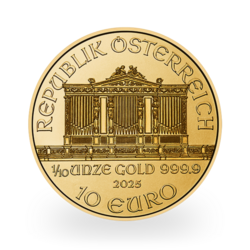The German economy is doing well but the country’s banks are suffering due to zero rates. Commerzbank, the country’s second largest bank after Deutsche Bank, announced declining results with its net profit collapsing from €1 billion in 2015 to €279 million in 2016. And Deutsche Bank announced a loss of €1.4 billion, due in part to several fines, but also, like Commerzbank, to low interest rates that made its turnover plunge 10% lower, to €30 billion. Another country that is doing well, the United Kingdom, has its largest bank, HSBC, announcing a drop of 82% in net profit ($2.48 billion in 2016, $13.52 billion in 2015), notably due to lower rates. The pound Sterling doesn’t differ from the euro in this regard.
In Europe, on average, two-thirds of the net turnover for banks comes from margins on interest – the difference between the rate charged to the customer and the rate at which the bank refinances itself. Of course, with zero rates, this margin is being crushed. Even more so since that in most European countries loans are made using variable rates: this, in turn, affects all other loans and lowers the margins. One exception is France, with fixed rate loans, although they can be renegotiated – but few people do it. Thus French banks are a little less hit by these low rates and they still hold performing loans, which explains their relative good health. But if low of zero rates persist, they will also be hit, for sure.
Zero rates are hitting European banks at the core of their activity, and we must add to that their bad loans, especially in Italy, Spain, Portugal, Greece and Cyprus – as we’ve mentioned before. What should worry us is that banks in countries that are doing fine are not spared.
However, for the moment, these declines in profits and threats on solvency are being masked by the European Central Bank, which lets banks have access to all the liquidity they need. Since the euro crisis in 2011, the ECB hasn’t been shy with measures dedicated to bank refinancing (LTRO, VLTRO, T-LTRO etc.), to which we must add its quantitative easing program (80 billion euro per month, 60 starting in March), which brings the banks even more liquidity. This policy brings abnormal growth to the ECB: its balance sheet has ballooned to 3.66 trillion euro – the equivalent of 31.6% of the euro zone’s GDP!
How long can this go on? With this instability, a shock could come from anywhere. Germany, for instance, keeps criticizing the lax ECB policy and could lose patience. An “accident” could happen to an Italian bank or to Deutsche Bank. Political risks also must be taken into account with, as an example, a future Italian government that would announce its exit from the euro (Beppe Grillo’s 5-Star Movement is leading the polls). In any case, this explosion of the ECB’s balance sheet only serves to hide the euro zone crisis for a while, but it’s looming and even banks in countries doing well will be hit...
Reproduction, in whole or in part, is authorized as long as it includes all the text hyperlinks and a link back to the original source.
The information contained in this article is for information purposes only and does not constitute investment advice or a recommendation to buy or sell.

















